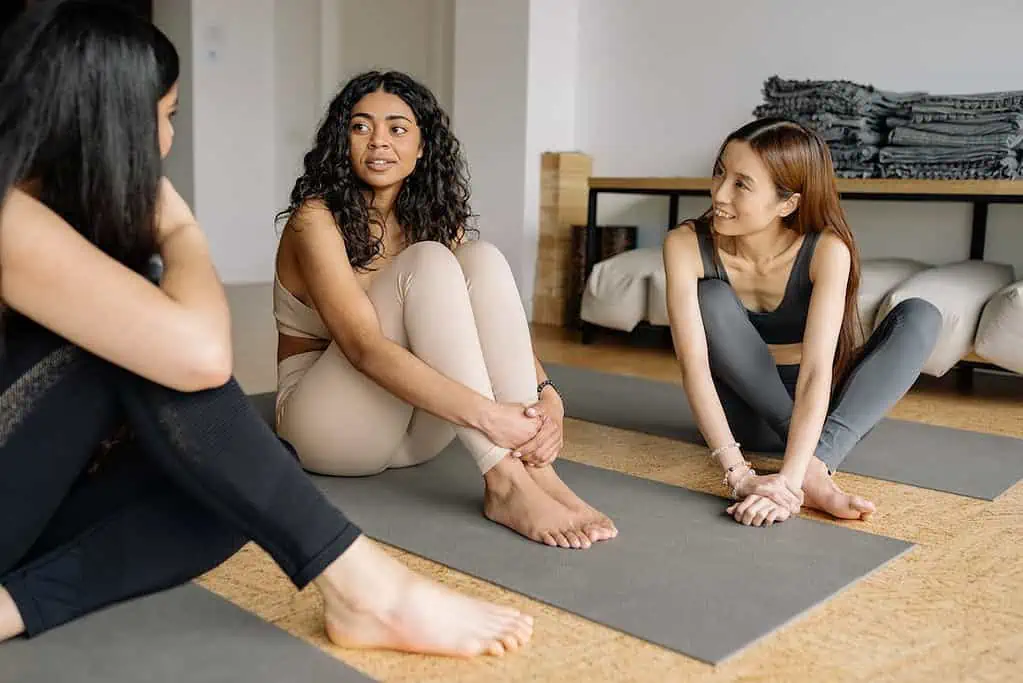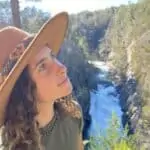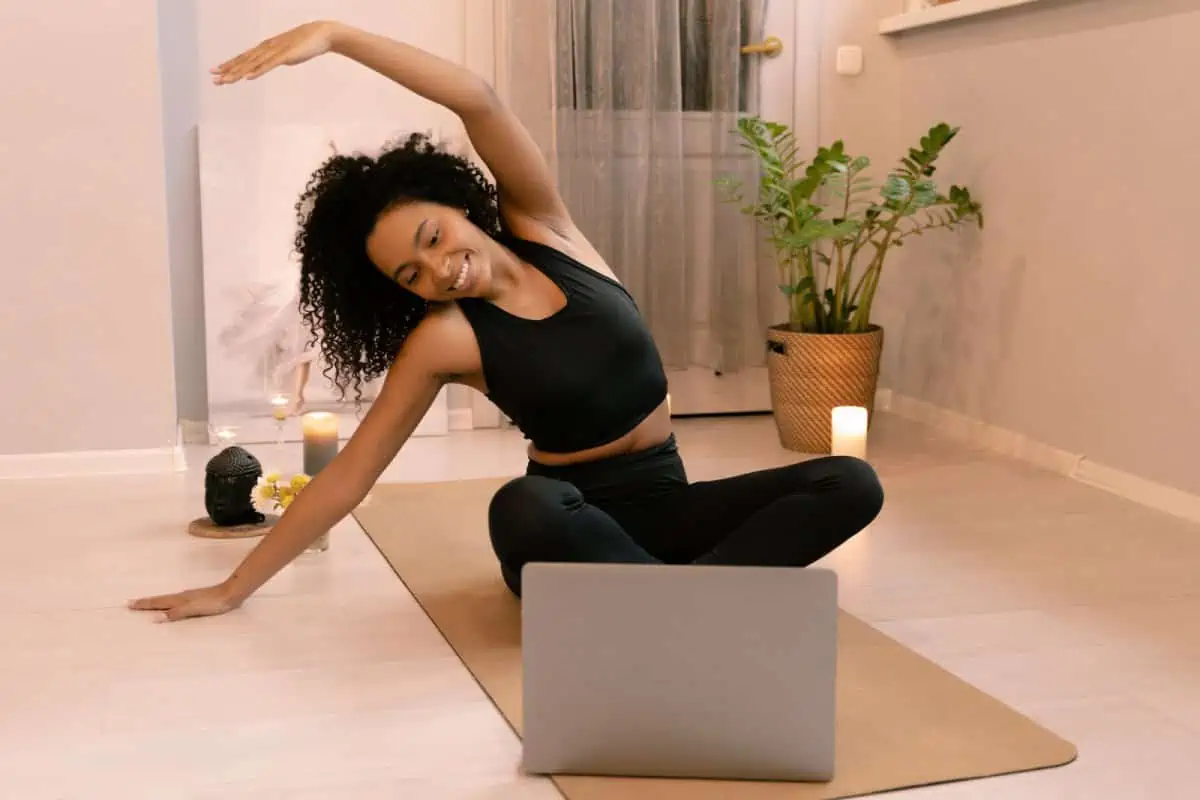Are you ready to start a yoga practice but feeling a little overwhelmed with the amount of online content? That is totally normal. Since yoga poses became accessible online, there was a flood of information on the internet about where to begin. So, if you are ready to step onto your mat and to learn a simple yoga routine that is suitable for beginners, then you are in the right place.
This article will walk you through a beginner yoga routine, step-by-step so that you can begin with confidence.
Contents
- 1 First Step – Know your body’s limits
- 2 What do I need for my yoga practice?
- 3 A yoga practice for beginners!
- 3.1 1. Start with breathing exercises
- 3.2 2. Child’s pose
- 3.3 3. Warm-up exercises
- 3.4 4. Find your downward dog
- 3.5 5. Left leg and left foot stretch – moving into a lunge
- 3.6 6. Repeat on the right side!
- 3.7 7. Standing poses
- 3.8 8. Balancing pose
- 3.9 9. Winding down with a calming pose
- 3.10 10. Finish with Savasana
- 4 Try a home class video
- 5 Frequently Asked Questions:
First Step – Know your body’s limits
The first and most important part of practicing yoga is knowing the limits of your body. For example, before going straight into a bridge pose, there are other parts of the body you should warm up and injuries that you should consider. The same goes for knowing when to keep your knee straight or bent to prevent common yoga injuries.
Practicing yoga with tight muscles, injury or pain can be detrimental to the body if these parts of the body are not taken into consideration. Yoga teachers are a guide for the class, but only you can truly know and understand your own body. Take the words and instructions in the following sequence as a suggestion, but use your own intuition and gut-feeling first. This will help you to stay safe during your yoga practice!
What do I need for my yoga practice?
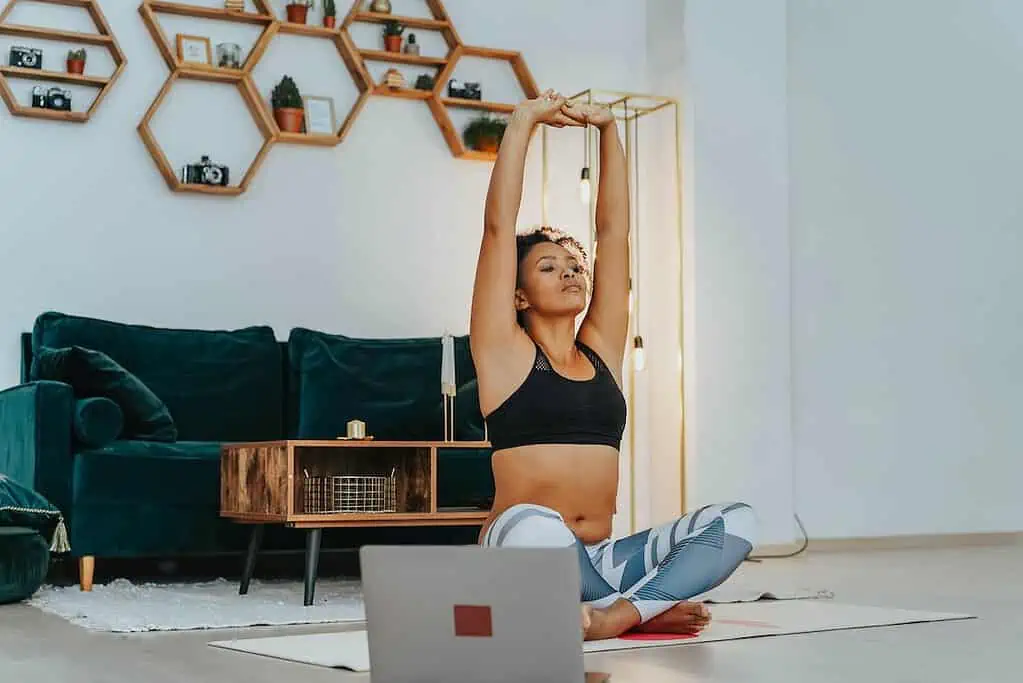
To practice yoga you will need the following items:
- Comfy clothes, either sports or activewear.
- A yoga mat or towel. If you don’t have a yoga mat, you can use a carpet or a grassy surface to practice yoga on.
- You may like to use yoga props such as bolsters, blankets, or yoga blocks to support your body. Yoga props can create both comfort and stability in some poses.
- A calming and inspiring yoga playlist.
A yoga practice for beginners!
This practice will link together some basic yoga poses for beginners to create a restorative flow. Roll out your mat, get into your yoga clothes, press play on your yoga music and get ready to connect with your body and breath!
This class is based on a hatha yoga practice for building strength in both the mind and body.
1. Start with breathing exercises
Take the first few moments of your practice to find a comfortable seat, preferably cross-legged on your mat. Then, close your eyes and take a few deep breaths. If it is uncomfortable for the hips, you can try sitting on a folded blanket to prop the hips up and give them more space. With time and regular practice, your hips will feel more comfortable in seated positions.
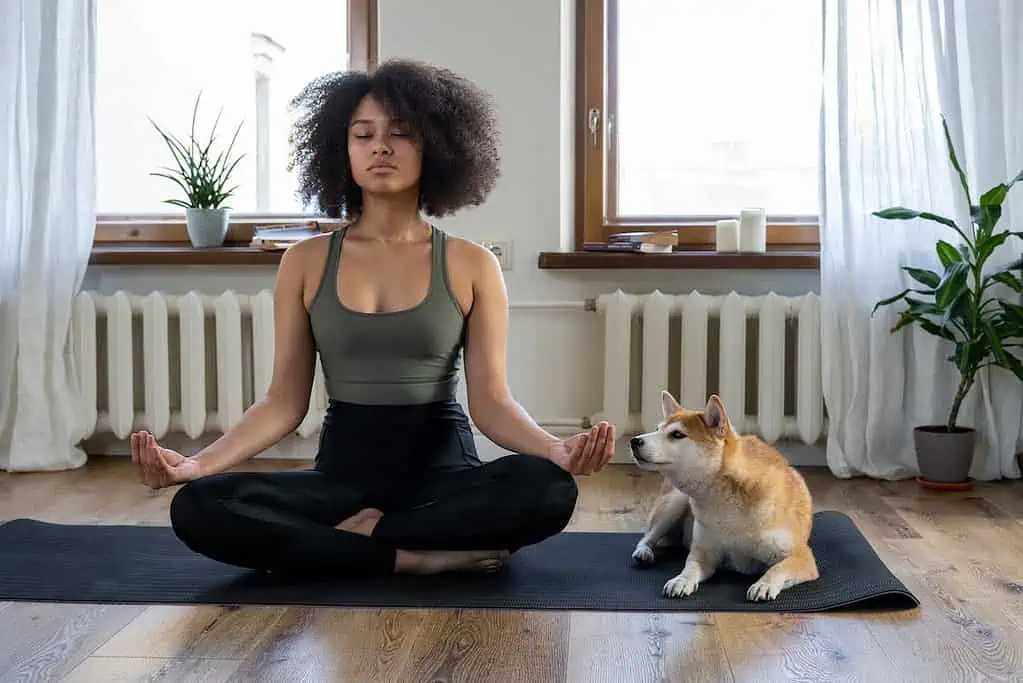
2. Child’s pose
Sit back on your knees, with your spine held straight and then take your knees to the outer edges of your mat. Keep the big toes tucked and touching one another. Fold forward over your knees and stretch your arms out in a straight line. Press your palms into the ground and activate all 10 fingers.
Stay here for 10 deep breaths, feeling your belly rise and fall between your thighs.
Make sure your forehead is connected to the floor beneath you, as this allows the body to switch to the parasympathetic nervous system, also known as rest and digest mode.
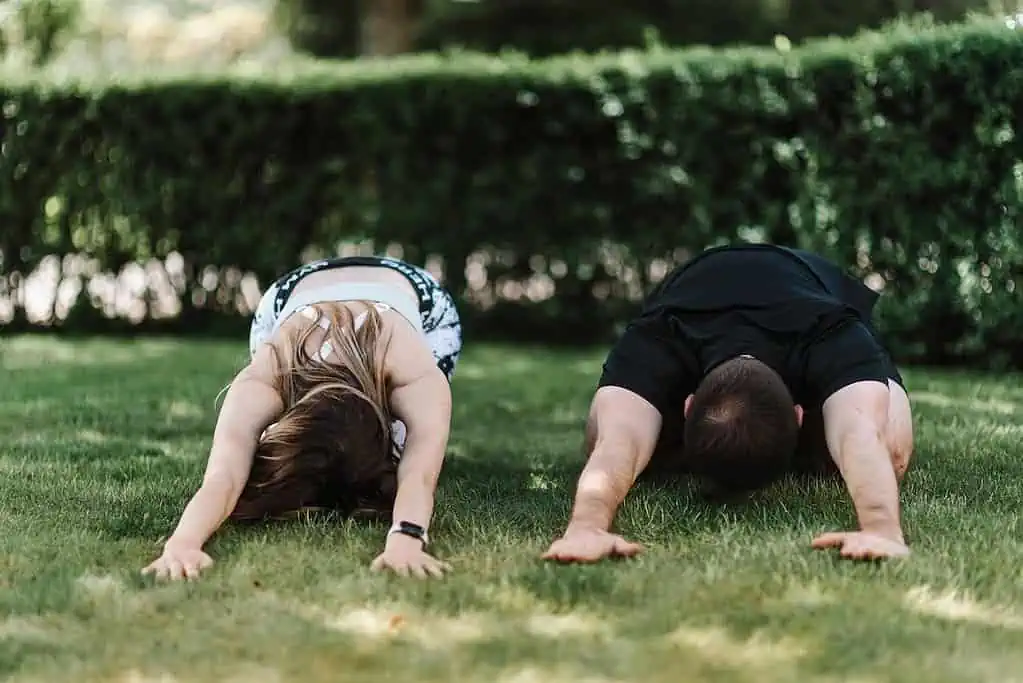
3. Warm-up exercises
From your child’s pose, shift your weight forward and come onto all fours (your hands and knees). Let your shins be parallel now with the knees hip distance apart. Set your hands down beneath your shoulders and begin to move through cat-cow pose, otherwise known as bidalasana. This is a common warm-up exercise for awakening the energy of the spine.
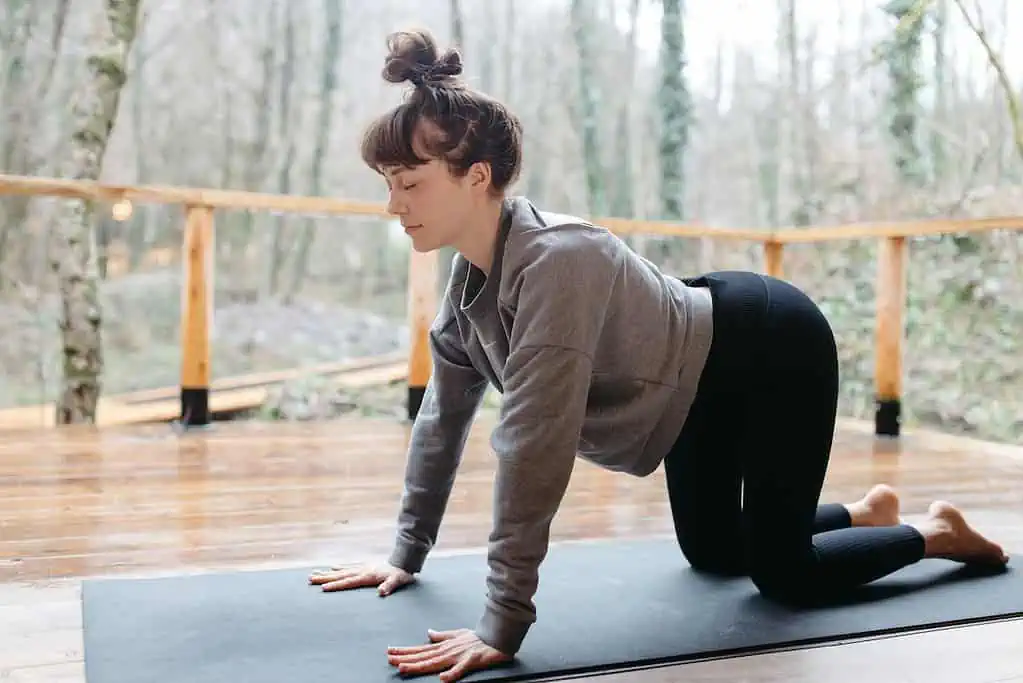
As you inhale, drop the chest down toward the mat, round the spine, and look forward. On your exhale, imagine that you push the floor away, arching the spine until the body forms a curved shape. This full-body stretch can follow the pattern of the breath, undulating between cat and cow shapes as you inhale and exhale.
Do this for at least 10 deep breaths. If you want to get creative, you can also move your spine in circles or figure-8 shapes to create more movement and variety in the body.
When you have finished, come back to a straight spine and stay for one neutralizing breath.
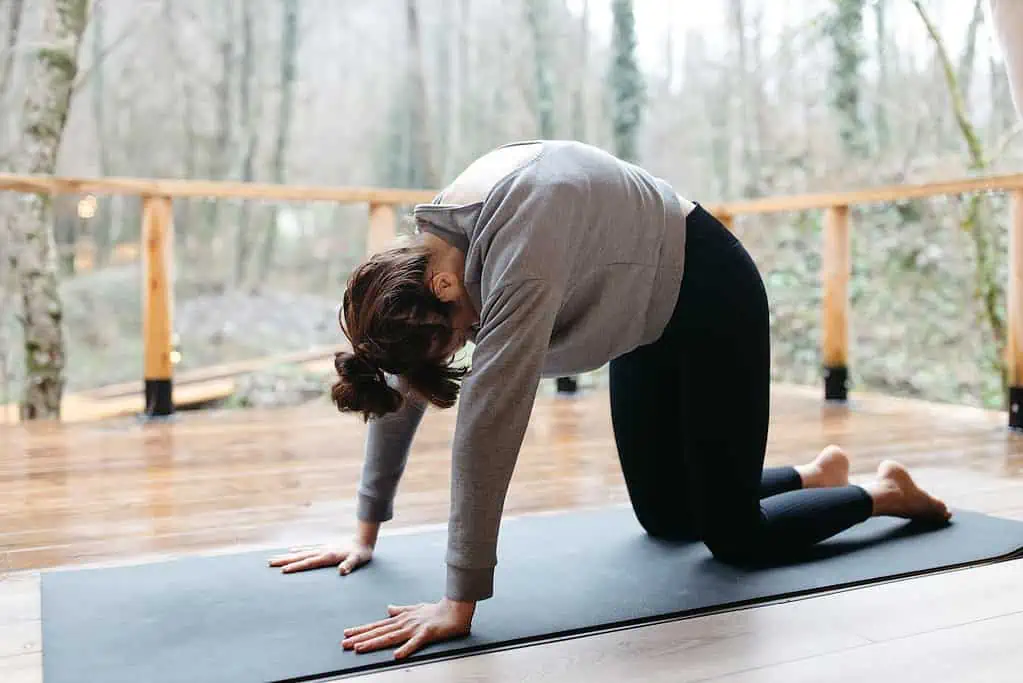
4. Find your downward dog
From your tabletop position, tuck your toes under and press your weight into the balls of your feet. Activate your abdominal muscles and hold this plank position for at least one breath.
If you are feeling strong, you can take a few breaths in a plank position before sending your hips up to the sky. Your left thigh should be parallel to the right thigh.
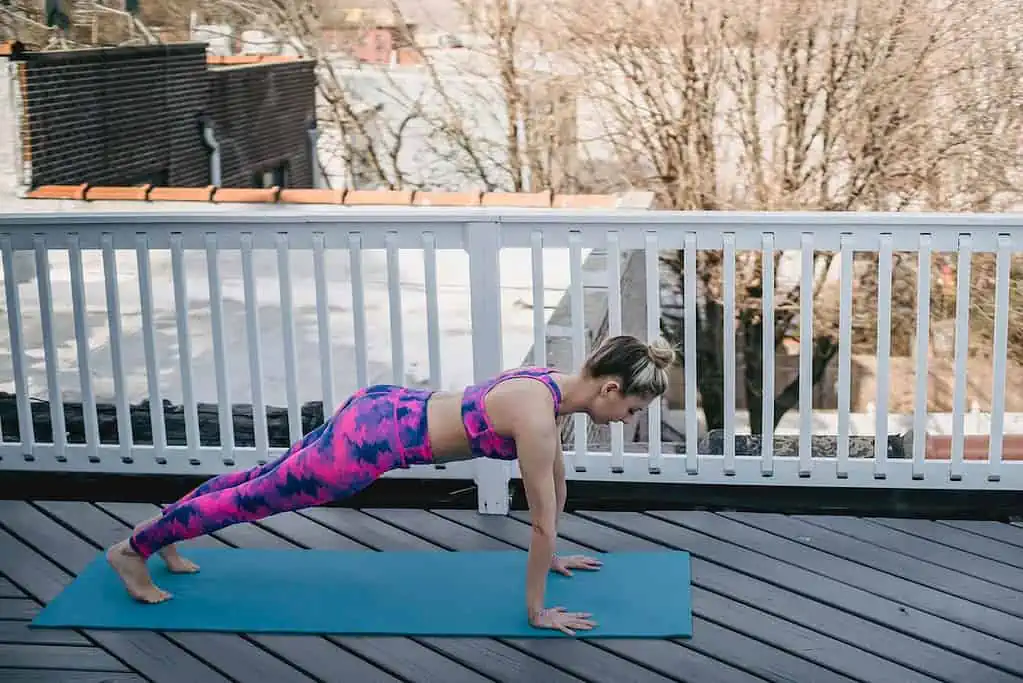
You may need to walk your hands forward a few inches, to really press into the hands to help you straighten the spine. Become active in your muscles but keep your shoulders relaxed. You should feel this activation coming from the hands and the feet.
Make your feet parallel to one another, and look through your thighs or toward your knees to stretch the back of your neck.
Hold this downward-facing dog position for 10 deep and nourishing breaths.
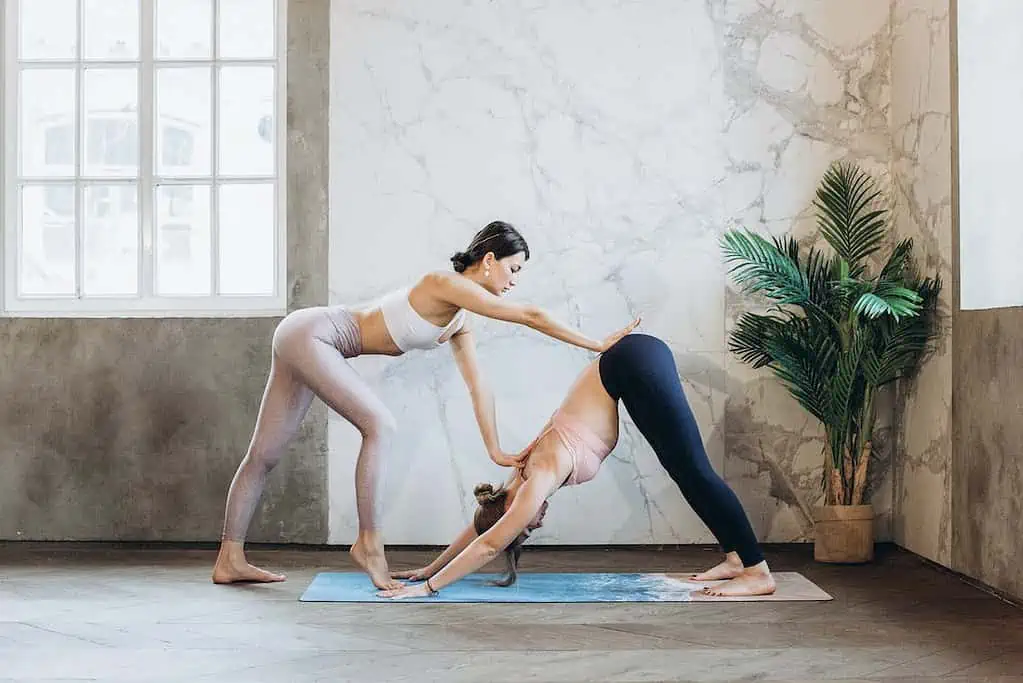
5. Left leg and left foot stretch – moving into a lunge
From your downward-facing dog, take your left leg up to the sky behind you, extending it long. From here you can bend the left knee, and open up the hip, creating a nice and deep left thigh stretch. This is called three-legged dog.
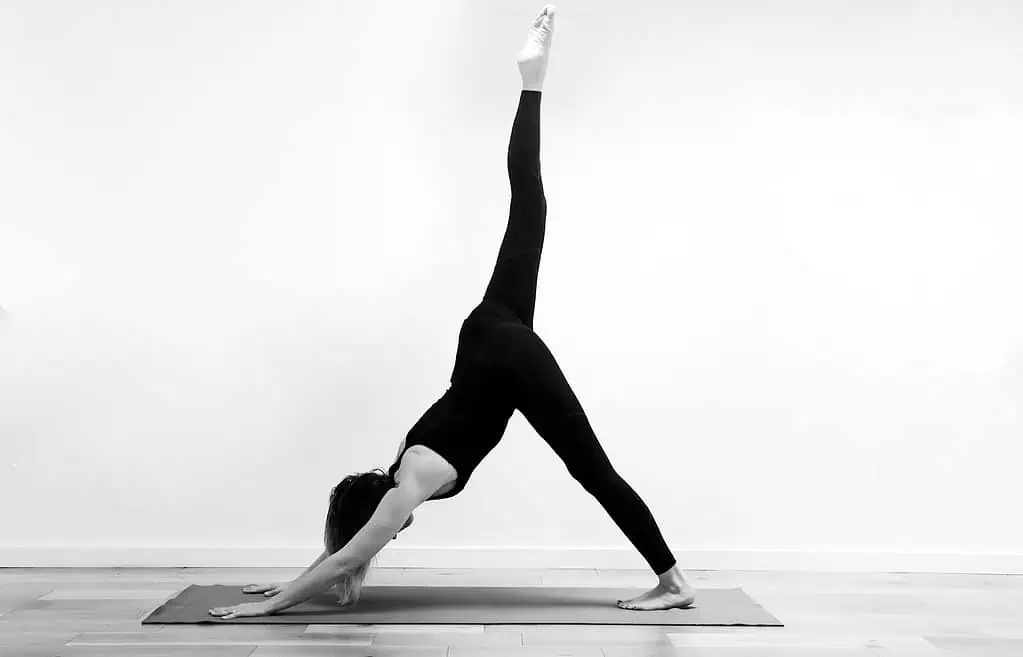
With this floating left leg, take the foot to the top of the mat. Bend your left knee and set the foot down between your hands. Steady your feet, with your left toes facing forward, and right foot parallel to the back of the mat. Press into your feet and toes and then rise up to Warrior II, the left leg being the front leg.
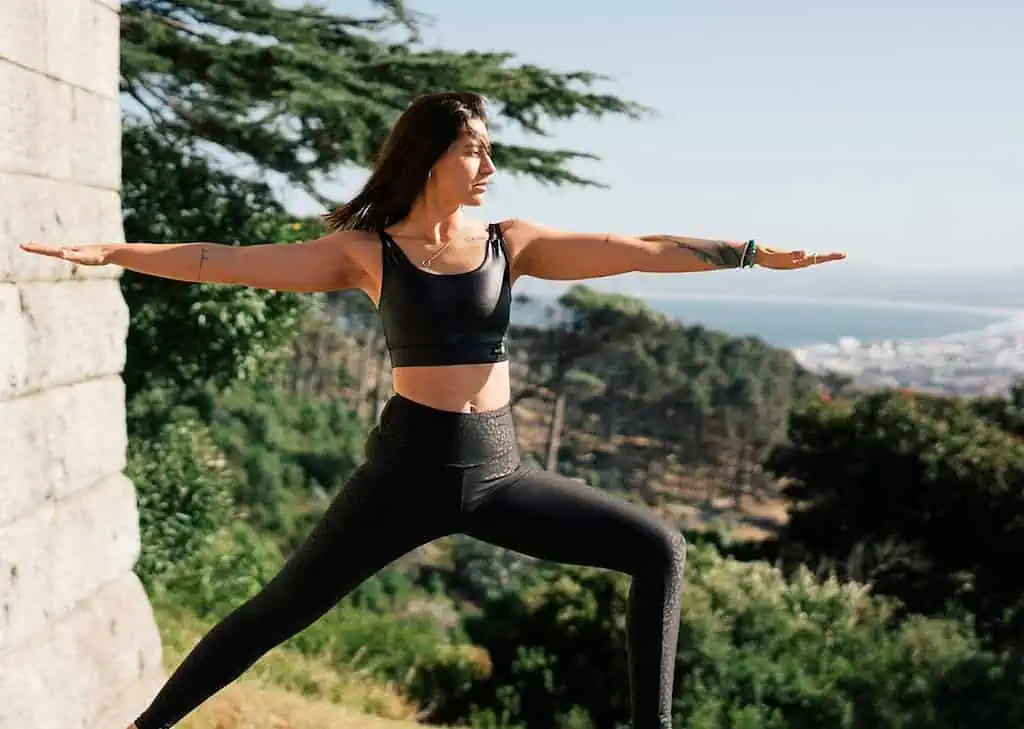
In warrior II, you want to have your arms spread in opposite directions, your left hand and left fingertips reaching forward, and right hand toward the back of your mat. Keep the arms extended, strong yet steady, and take your gaze over the top of the left fingertips. Hold for 10 deep breaths. Try to breathe into your belly as you stay here.
The Warrior poses are an integral part of yoga classes for they stimulate the solar plexus, the power center, and allow us to connect with our purpose for being in the yoga class, but also our greater purpose out in the world.
From Warrior II, take your left forearm down to the left leg and reach your right hand up and over, creating a slight arch on the right side of the body. This is called the extended side angle pose.
Feel the strong line of energy from your right heel to your right fingertips and breath into the lungs. Again, take 10 deep breaths, building strength in this position.
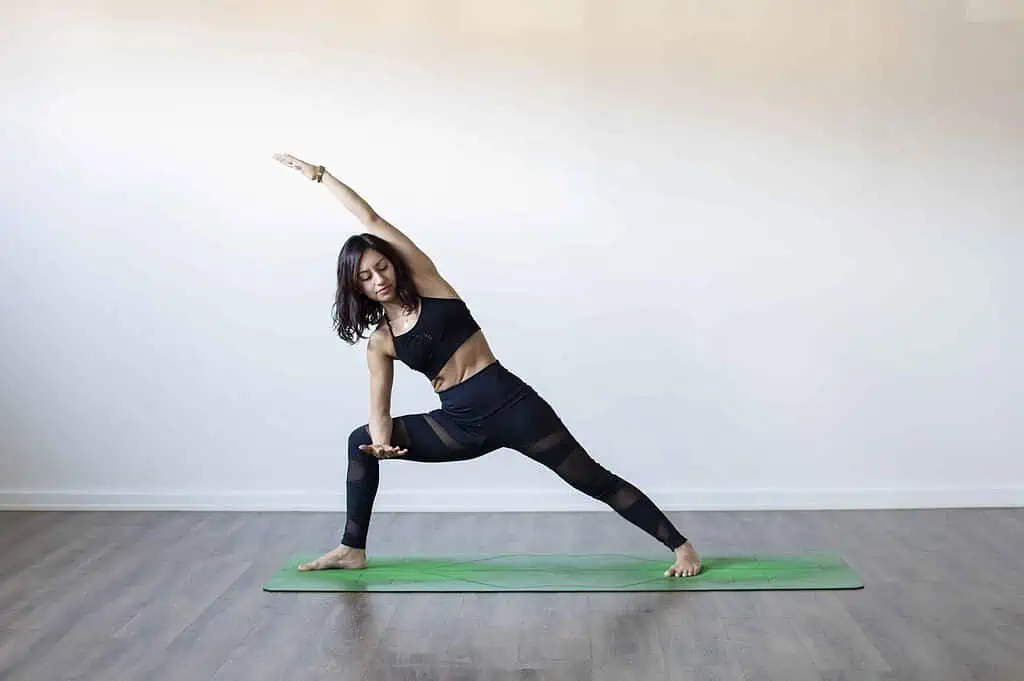
6. Repeat on the right side!
From your side angle, rotate your chest to look over the left knee. place your hands on the floor, either side of the left foot, and then step your left foot back to find a downward-facing dog pose.
Then repeat the sequence above on the right side. So, take your right leg up in the air behind you, extending the leg. Bend the right knee, and open up the hip, stretching through the right thigh. Next, draw the right leg in and take your right ankle between your hands. Place the right foot down on the mat and set up your feet for warrior II.
Become active in the front leg and the back foot, pressing firmly into the ground. Then rise the body up, finding warrior II. Extend your right arm forward and left arm behind you. Holding the front knee in a deep yet active bent leg position. Make sure the outer edge of your back foot is pressing into the mat. Hold here for 10 breaths.
Move into an extended side angle pose on the other side now, connecting your right arm with your right knee or right leg and taking the left arm overhead, extending toward the ceiling or the front of your mat. Again, hold for 10 nourishing breaths.
Then, place your hands on the ground, step the right foot back and reconnect with your downward-facing dog.
If you need a short break here, you can always return to child’s pose for a few breaths.
7. Standing poses
From downward-facing dog, walk your feet to the top of your mat. In a forward folded pose, take hold of opposite elbows and allow the spine to hang freely. This is called ‘rag doll’ because the body should hang loose and heavy just like a rag doll. You can gently swing your elbows side to side, releasing tension in the spine, shoulders, and backs of the legs.
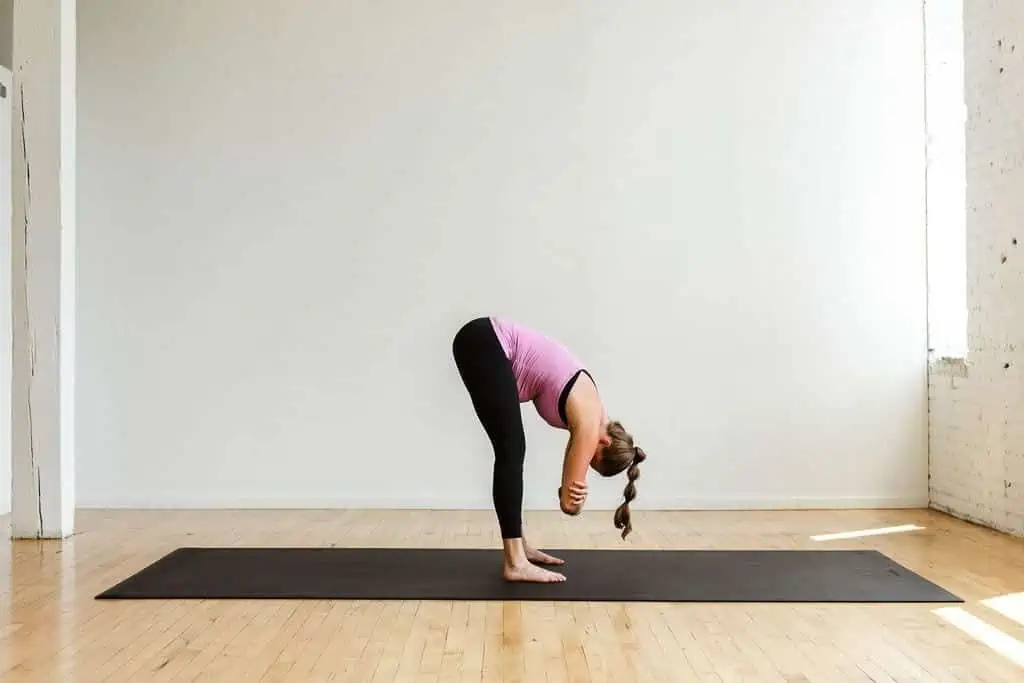
Slowly start to roll the spine up, one vertebra at a time until your reach a standing position. This is mountain pose, or in Sanskrit, it is known as Tadasana. To get the right alignment in your mountain pose, separate your feet hip-width apart, lift your upper body and shine your chest forward.
Stand tall in mountain pose, like you are the mountain itself, strong and steady in the spine, holding your body open and proud.
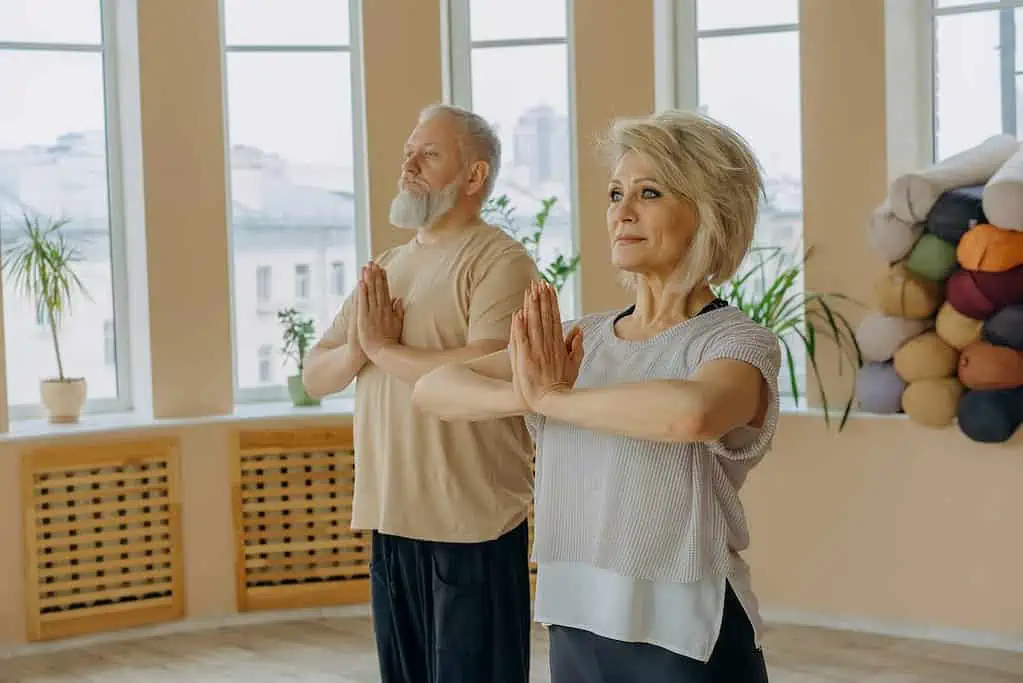
Imagine that your breath travels in through your feet and all the way up your spine. Then the breath returns down the spine and out through your feet on the exhale. Continue this breathing exercise for 10 breaths of visualization, growing taller with every inhale.
8. Balancing pose
From mountain pose, it is time to test your balance in tree pose. In this yoga session, balance poses are the key to finding balance both on and off the mat. Shift your weight into your left ankle, and bring the right foot to either the left ankle, calf, or inner thigh. You can keep your hands in prayer position at your heart space, or on your next inhale, rise your arms straight up toward the ceiling or sky above you. This is tree pose.
Focus your gaze on one set point on the ground or space in front of you to keep your balance, and simply breathe. Again holding for 10 breaths before swapping to the other side.
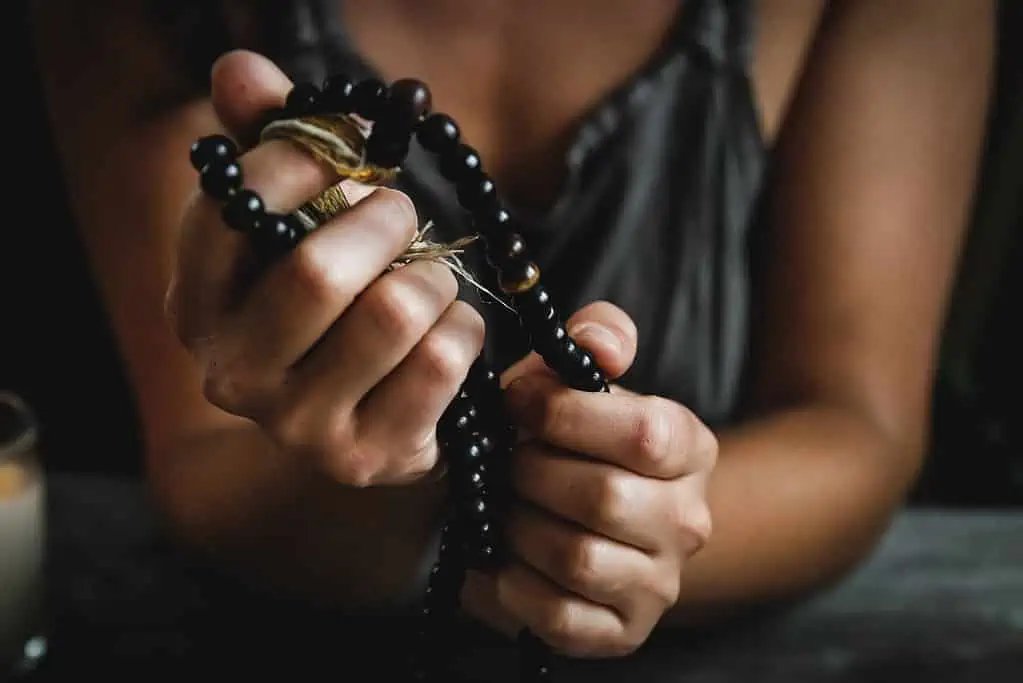
After you have balanced on both the right and left legs, holding a tree pose on both sides, place your feet firmly on the ground, and bend your knees, deeper and deeper until your hips can reach down to the ground.
Release your hips to come to a seated position once again.
9. Winding down with a calming pose
To relieve tension that is still being held in the body, it can be nice to finish the class with a few calming yoga poses. Any yoga poses that include forward folds, are generally considered to be calming for the nervous system as it is a chance to go inward, deeper into the mind and body.
A seated forward bend, known as paschimottanasana can be a wonderful way to make the practice more introverted. Extend your legs and reach your hands toward your legs or ankles, whatever is within reach for you, and fold from the waist.
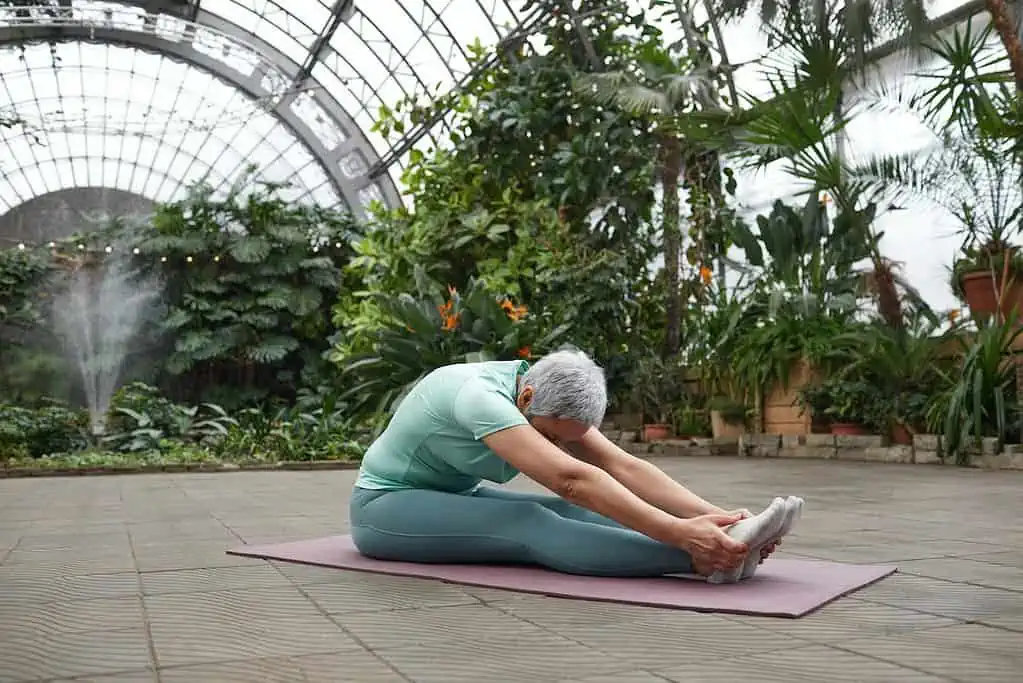
Again, if you feel tight in the hips, you can sit on a yoga block or blanket to support the forward fold.
Another great way forward fold is a child’s pose, which can be done at the end of a yoga class to calm the body. These kinds of folded poses are commonly a part of restorative yoga classes for their relaxing effect.
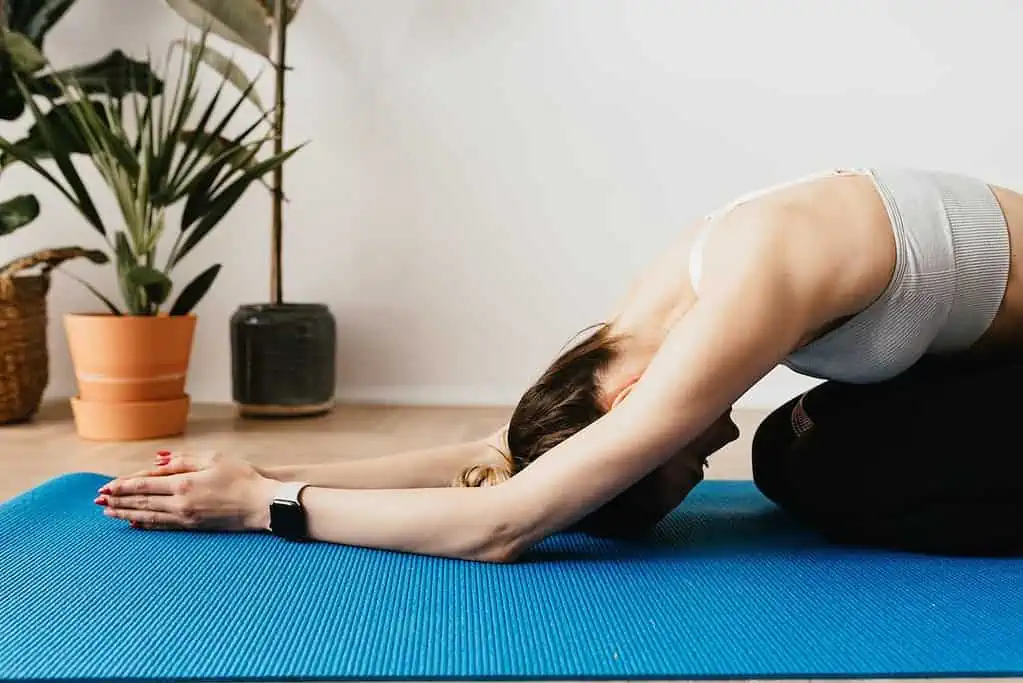
10. Finish with Savasana
Corpse pose is a chance for the entire body to relax. Savasana is known as corpse pose as it is usually the final part of a yoga class in which the entire body can relax.
To be in savasana, lay your spine flat on the mat, close your eyes, spread your legs to the edges of your mat and have your palms facing forward toward the ceiling.
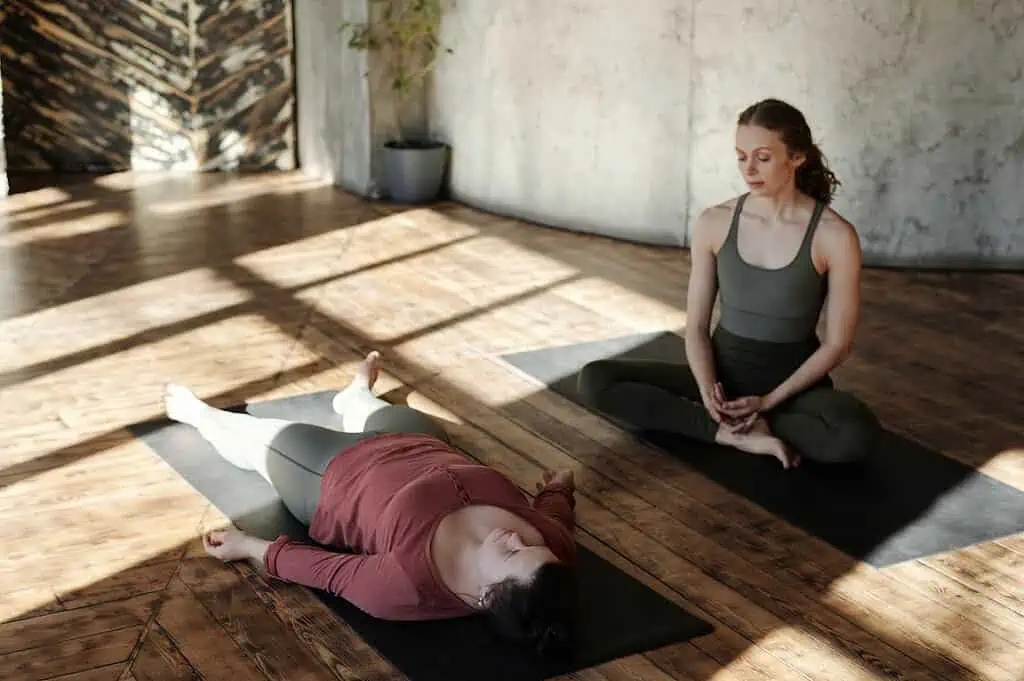
Try a home class video
When you are familiar with these basic yoga poses, you can link them together to create a yoga flow that feels good for your body. Try a daily practice to improve
If you want the guidance of a yoga teacher, you can also find beginner yoga routine classes online. A great place to start is Yoga with Adriene:
Frequently Asked Questions:
How can I start a beginner yoga routine at home?
To start a yoga routine at home, get to know a few key poses, such as those listed in this article. Schedule in time, 15 – 30 minutes, per day or per week to practice these poses and watch yourself improve and build strength over time!
What are the next steps for improving my yoga practice?
When you feel comfortable with your beginner yoga poses and you feel ready to grow more, try some more challenging online classes, seek out a teacher at a local studio, or perhaps you may even like to enrol in a 200 hour Yoga Teacher Training to take your yoga knowledge to the next level.
